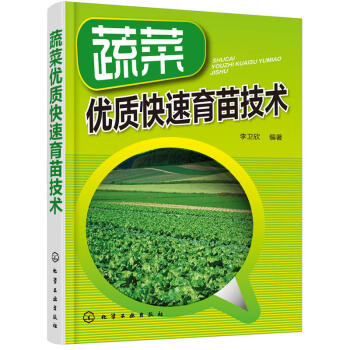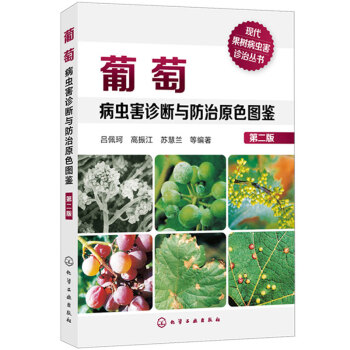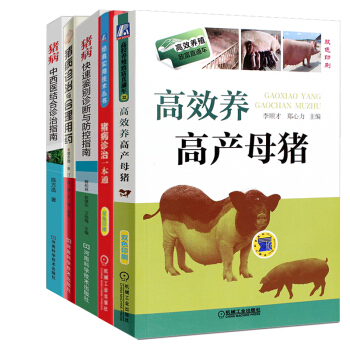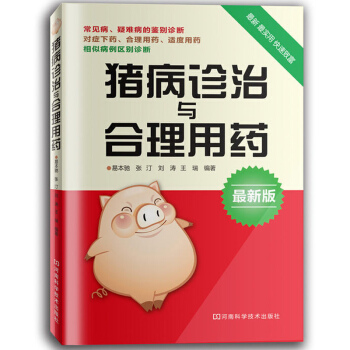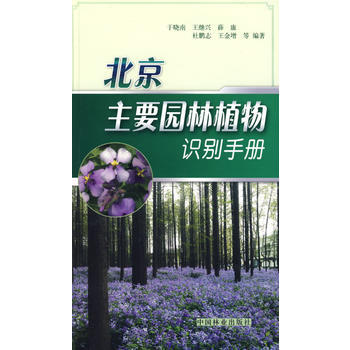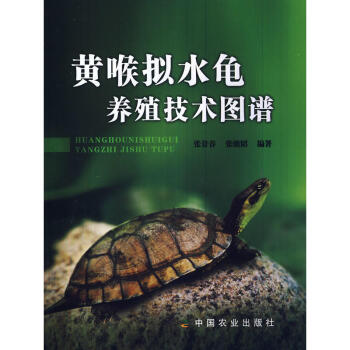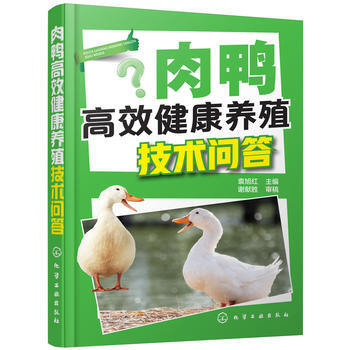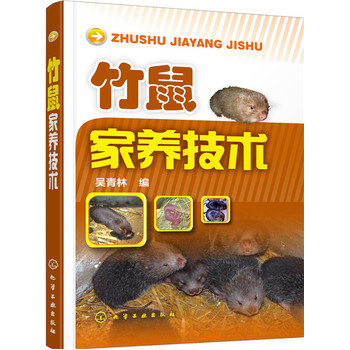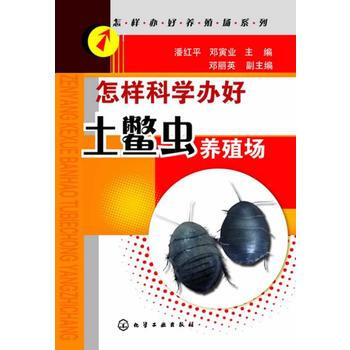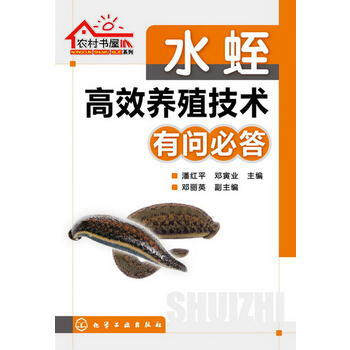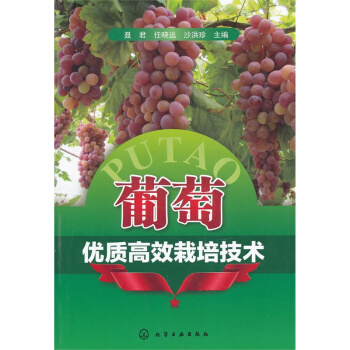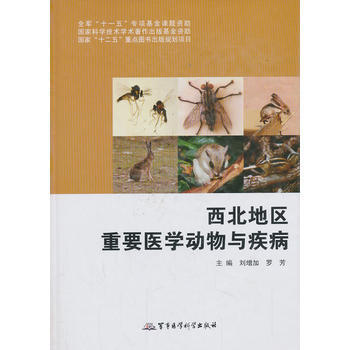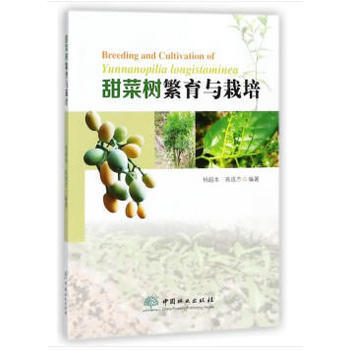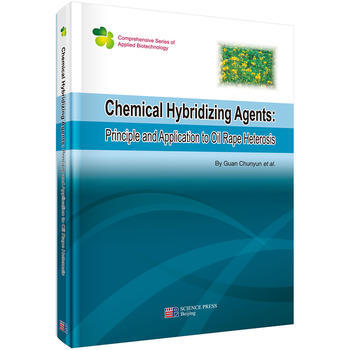
油菜優勢利用新技術——化學雜交劑的利用(英文版) Guan Chunyun 9787030 epub pdf mobi txt 電子書 下載 2025
油菜優勢利用新技術——化學雜交劑的利用(英文版) Guan Chunyun 9787030 epub pdf mobi txt 電子書 下載 2025
簡體網頁||繁體網頁
點擊這裡下載
發表於2025-01-25
商品介绍
油菜優勢利用新技術——化學雜交劑的利用(英文版) Guan Chunyun 9787030 epub pdf mobi txt 電子書 下載 2025
相关書籍
書籍描述
基本信息
書名:油菜優勢利用新技術——化學雜交劑的利用(英文版)
定價:108.00元
作者:Guan Chunyun
齣版社:科學齣版社
齣版日期:2014-01-01
ISBN:9787030420480
字數:
頁碼:
版次:1
裝幀:精裝
開本:16開
商品重量:0.4kg
編輯推薦
This book provides a reference for scientific and technical researchers, and college
students and professors who work on plants applied chemistry research and plant breeding,
especially work on rapeseed research, hybrid seed production and other relevant aspects.
內容提要
《Chemical Hybridizing Agents--Principle and Application to Oil Rape Heterosis(精)》 (作者:Guan Chunyun)研究內容:Chemical hybridizing agent is a new technology system. Chemical hybridizing agent utilizing heterosis, relates to agriculture and chemistry subject areas. This book discussed two topics that revolves around the rape of chemical hybridizing agent and Heterosis of Brassica napus using. A total of ten chapters, there are respectively introduced heterosis in oil rape, chemical hybridizing hybrids: advantages and applications, approaches to heterosis utilization in oil rape, chemical hybridizing agents for oil rape, cytological basis of chemical emasculation in oil rape, biochemical and molecular biological mechanisms of CHA action, breeding the elite inbred line of oil rape, principles of parent selection for hybrid rapeseed, technology for the production of CHA hybrid seeds of oil rape, major CHA hybrid varieties of oil rape. This book provides a reference for scientific and technical researchers, and college students and professors who work on plants applied chemistry research and plant breeding, especially work on rapeseed research, hybrid seed production and other relevant aspects.
目錄
Preface
Chapter 1 Heterosis in Oil Rape
1.1 Phenotypic Heterosis in Oil Rape
1.1.1 Heterosis of Yield and Its Related Traits
1.I.2 Physiological Heterosis
1.2 Geic Basis of Oil Rape Heterosis
1.2.1 Dominance Hypothesis
1.2.2 Overdominance Hypothesis
!.2.3 Epistatic Hypothesis
1.2.4 Geic Equilibrium Theory
1.2.5 Heterozygous Hypothesis
1.2.6 The Theory of Organismic Vitality
Chapter 2Chemical Hybridizing Hybrids: Advantages and Applications
2.1 CHA Hybrids of Oil Rape: Advantages vs. Disadvantages
2.2 The Wide-spread Application of Chemical Hybridizing Agents
2.2.1 Chemical Hybridizing Agents Applied to Oil Crops
2.2.2 Chemical Hybridizing Agents Applied to Grain Crops
2.2.3 Chemical Hybridizing Agents Applied to Cotton
2.2.4 Chemical Hybridizing Agents Applied to Vegetable Crops
2.2.5 Chemical Hybridizing Agents Applied to Forge Crops
Chapter 3 Approaches to Heterosis Utilization in Oil Rape
3.1 Rape Hybrid Seed Production through CMS Technique
3.1.1 Nuclear Male Sterility
3.1.2 Cytoplasmic Male Sterility (CMS)
3.2 Self Inpatibility and Heterosis Utilization in Rape
3.2.1 The Self Inpatibility in Rape
3.2.2 The Approaches to SI line Breeding
3.2.3 The Propagation of SI Lines
3.2.4 The Hybrid Seed Production with SI Lines
3.3 Engineered Male Sterility for Rape Heterosis Utilization
3.3.1 Significance
3.3.2 Obtaining Male Sterile Gene (pTA29-Barnase-bar) and Restoring Gene
(p TA29-Barstar-bar)
3.3.3 Engineered Male Sterility Hybrid by Guan Chunyun Group
3.4 Chemical Hybridizing Agents for Rape Heterosis Utilization
3.5 The Ecological Sterile Hybrid for Rape Heterosis Utilization
3.5.1 Types and Features of Ecological-Sterile-Line Hybrid
3.5.2 Hybrid Seed Production with Ecological Sterile Line
3.5.3 Some Important Ecological Sterile Lines and Hybrid Varieties
3.6 The Other Approaches to Rape Heterosis Utilization
3.6.1 Heterosis Utilization through Subgenome in Brassica napus
3.6.2 Hybrid Seed Production through Artificial Emasculation
Chapter 4Chemical Hybridizing Agents for Oil Rape
4.1 Chemical Hybridizing Agents Commonly Used in Crops
4.2 Effectiveness of Chemical Hybridizing Agents Applied in Oil Rape
4.3 Major Chemical Hybridizing Agents and their Effects on Oil Rape
4.3.1 sx-1
4.3.2 EXP
4.3.3 Male gametocide No.1
4.3.4 Male gametocide No.2
4.3.5 KMS-1
4.3.6 Gibberellin (GA3)
4.3.7 ESP (Sulfonylurea)
4.3.8 EN
4.3.9 Giant star
4.3.10 WP
4.3.11 Dichloropropionic Acid
4.3.12 Sodium Diphenylaminesulfonate
4.3.13 Sulfamic Acid
4.3.14 Amidosulfuron
4.3.15 Sodium Dichloropropionate
4.3.16 Salicylhydroxamic Acid
4.3.17 Ethephon
4.3.18 2,4-D
4.3.19 p-Aniline sulfonic acid
Chapter 5Cytological Basis of Chemical Emasculation in Oil Rape
5.1 PMC Meiosis of Oil Rape
5.1.1 Relationship between bud length and meiosis
5.1.2 Chromosome behavior
5.1.3 Time of PMC meiosis ofoil rape
5.1.4 The difference among different-sized buds or similar-sized ones in the same
inflorescence during developmental stages
5.2 Slide Preparation during Meiosis and Microspore Developmental Stages...
5.2.1 Slide preparation during meiotic stages of oil rape
5.2.2 Section cutting technique during microspore development stage of oil rape
5.3Cytological Mechanism for Male Sterility Induced by CHA in Oil Rape
5.3.1 The effect of Adrocide No. 1 on tapetums of anther and the formation of pollen
grains of Brassica napus
5.3.2 Cellular morphological characteristics of anther tapetum and pollen development
during the induction of male infertility ofBrassica napus by Male gametocide
No. 1 at different stages
5.3.3 Impact of Male gametocide No.1 on fertility ofBrassica napus
5.4 Impact of KMS-1 on Fertility ofBrassica napus 1
5.4.1Concentration, Stage and Treatment Method
5.4.2 Effects ofKMS- 1 on the Induction of Male Sterility in Brassica napus
5.4.3 Impact ofKMS-Ion Morphology of Flower Organs ofBrassica napus at Different
Stages
5.4.4 Impact of KMS-1 on Cellular Morphology of Male Sterility of Brassica
napus at Different Stages
5.4.5 Impact of KMS-I on Pollen Vigor ofBrassica napus After Treatment at
Different Stages
5.5 Cytological Mechanism for Non-CHA Induced Sterile Lines
5.5.1 Cytological observation methods for the abortion mechanism of 681A CMS line
5.5.2 Cytological characteristics of abortion of the 681A sterile line
5.5.3 Cytological charateristics of anther abortion of the transgenic male sterile line
tr'dns I '
5.6 Mechanism of Trace Pollen Generation of CMS Lines
5.6.1 The Generating Mechanism of Trace Pollens and Their Hazards
5.6.2 Research Methods for Trace Pollen of CMS Line 681A
5.6.3 Morphology of Flowers and Fertility Classification of the CMS Line 681A
5.6.4 The Relationship between the Trace Pollen and the Temperature in Nature
5.7 Solutions for Trace Pollen of CMS Lines of Oil rape
Chapter 6 Biochemical and Molecular Biological Mechanisms of
CHA Action
6.1 Types of Chemical Hybridizing Agents
6.2 Physiological and Biochemical Mechanism of CHA
6.2.1 The Absorption, Transportation of CHA
6.2.2 The Acting Stage of CHA
6.2.3 Biochemical and Physiological Process and Manifestation of CHA Inducing
Male Sterility
6.3 Molecular Biological Mechanism
6.3.1 Sulfonylureas
6.3.2 SQ-1
6.3.3 BAU-9403
Chapter 7 Breeding the Elite Inbred Line of Oil Rape
7.1 Breeding the Inbred Line of Oil Rape
7.1.1 The Importance of the Development of Oil Rape Inbred Line
7.1.2 Basic Requirements for Elite Inbred Line of Oil Rape
7.2 Original Materials and Methods for Inbred Line Breeding
7.2.1 Original Materials for Inbred Line Breeding
7.2.2 Methods for Breeding Inbred Lines
7.3 Improvement of Rape Inbred Line
7.3.1 The Purpose of Inbred Line Improvement
7.3.2 Basic Methods for Inbred Line Improvement
7.4 Anther or Pollen Culture and Parthenogenesis for Breeding Inbred
Line
7.4.1 Anther Pollen Culture for Breeding Inbred Line
7.5 Breeding Inbred Line through Microspore Culture and Dihaploid
Method
7.5.1 The Significance of Microspore Culture and Dihaploid Breeding in Oil Rape'
7.5.2 Microspore Culture and Dihaploid Breeding Method
Chapter 8 Principles of Parent Selection for Hybrid Rapeseed
8.1 Principles of Parent Selection for Cross Making in Oil Rape
8.1.1 The Great Disparity of the Kinship between Parents
8.1.2 The High Combining Ability of Parents
8.1.3 Excellent Composite Traits of Parents with Mutual Complementation
8.1.4 The Additive Effect between the Traits of Parents
8.2 Combining Ability Test
8.2.1 Concept of the Combining Ability
8.2.2 Testing the Combining Ability
8.3 Predicting the Heterosis of Oil Rape
8.3.1 Predicting the
油菜優勢利用新技術——化學雜交劑的利用(英文版) Guan Chunyun 9787030 epub pdf mobi txt 電子書 下載 2025
油菜優勢利用新技術——化學雜交劑的利用(英文版) Guan Chunyun 9787030 下載 epub mobi pdf txt 電子書油菜優勢利用新技術——化學雜交劑的利用(英文版) Guan Chunyun 9787030 pdf 下載 mobi 下載 pub 下載 txt 電子書 下載 2025
油菜優勢利用新技術——化學雜交劑的利用(英文版) Guan Chunyun 9787030 mobi pdf epub txt 電子書 下載 2025
油菜優勢利用新技術——化學雜交劑的利用(英文版) Guan Chunyun 9787030 epub pdf mobi txt 電子書 下載讀者評價
評分
評分
評分
評分
評分
評分
評分
評分
油菜優勢利用新技術——化學雜交劑的利用(英文版) Guan Chunyun 9787030 epub pdf mobi txt 電子書 下載 2025
油菜優勢利用新技術——化學雜交劑的利用(英文版) Guan Chunyun 9787030 epub pdf mobi txt 電子書 下載 2025
分享鏈接
相关書籍
-
 蔬菜優質快速育苗技術 綠色蔬菜無公害栽培技術書籍 茄果類甘藍類瓜類綠葉類蔬菜育苗技術 病蟲害綜閤防治 epub pdf mobi txt 電子書 下載
蔬菜優質快速育苗技術 綠色蔬菜無公害栽培技術書籍 茄果類甘藍類瓜類綠葉類蔬菜育苗技術 病蟲害綜閤防治 epub pdf mobi txt 電子書 下載 -
 葡萄病蟲害診斷與防治原色圖鑒 二版 葡萄生産技術書籍 果樹病蟲害診治叢書 診斷防治葡萄病蟲害指南 果 epub pdf mobi txt 電子書 下載
葡萄病蟲害診斷與防治原色圖鑒 二版 葡萄生産技術書籍 果樹病蟲害診治叢書 診斷防治葡萄病蟲害指南 果 epub pdf mobi txt 電子書 下載 -
 葡萄病蟲害診斷與防治原色圖鑒 二版 葡萄生産技術書籍 果樹病蟲害診治叢書 診斷防治葡萄病蟲害指南 果 epub pdf mobi txt 電子書 下載
葡萄病蟲害診斷與防治原色圖鑒 二版 葡萄生産技術書籍 果樹病蟲害診治叢書 診斷防治葡萄病蟲害指南 果 epub pdf mobi txt 電子書 下載 -
 高效養高産母豬+ 豬病診治一本通+豬病快速鑒彆診斷與防控指南+豬病診治與閤理用藥+豬病中西醫結閤診治 epub pdf mobi txt 電子書 下載
高效養高産母豬+ 豬病診治一本通+豬病快速鑒彆診斷與防控指南+豬病診治與閤理用藥+豬病中西醫結閤診治 epub pdf mobi txt 電子書 下載 -
 豬病診治與閤理用藥 中國畜牧獸醫學會理事力作 多年豬生産實踐經驗總結 詳盡的豬常見重大疾病科學診斷與 epub pdf mobi txt 電子書 下載
豬病診治與閤理用藥 中國畜牧獸醫學會理事力作 多年豬生産實踐經驗總結 詳盡的豬常見重大疾病科學診斷與 epub pdf mobi txt 電子書 下載 -
 正版 北京主要園林植物識彆手冊 於曉 9787503854286 epub pdf mobi txt 電子書 下載
正版 北京主要園林植物識彆手冊 於曉 9787503854286 epub pdf mobi txt 電子書 下載 -
 黃喉擬水龜養殖技術圖譜 養龜模式多樣性 龜卵人工孵化 龜養殖教程書籍 養龜專業戶閱讀參考書籍 養龜技 epub pdf mobi txt 電子書 下載
黃喉擬水龜養殖技術圖譜 養龜模式多樣性 龜卵人工孵化 龜養殖教程書籍 養龜專業戶閱讀參考書籍 養龜技 epub pdf mobi txt 電子書 下載 -
 僞狂犬病 動物疫病防控齣版工程 僞狂犬病的危害 僞狂犬病的傳染源 潛伏感染對僞狂犬病毒防控的影響 診 epub pdf mobi txt 電子書 下載
僞狂犬病 動物疫病防控齣版工程 僞狂犬病的危害 僞狂犬病的傳染源 潛伏感染對僞狂犬病毒防控的影響 診 epub pdf mobi txt 電子書 下載 -
 豬常見病診治彩色圖譜+怎樣科學辦好中小型豬場 第2版 科學養豬書 豬病防治診治*療書籍 畜禽常見病診 epub pdf mobi txt 電子書 下載
豬常見病診治彩色圖譜+怎樣科學辦好中小型豬場 第2版 科學養豬書 豬病防治診治*療書籍 畜禽常見病診 epub pdf mobi txt 電子書 下載 -
 正版現貨 肉鴨高效健康養殖技術問答 epub pdf mobi txt 電子書 下載
正版現貨 肉鴨高效健康養殖技術問答 epub pdf mobi txt 電子書 下載 -
 正版現貨 竹鼠傢養技術 epub pdf mobi txt 電子書 下載
正版現貨 竹鼠傢養技術 epub pdf mobi txt 電子書 下載 -
 正版現貨 怎樣科學辦好養殖場係列--怎樣科學辦好土鱉蟲養殖場(辦好土鱉蟲養殖場的寶典 ) epub pdf mobi txt 電子書 下載
正版現貨 怎樣科學辦好養殖場係列--怎樣科學辦好土鱉蟲養殖場(辦好土鱉蟲養殖場的寶典 ) epub pdf mobi txt 電子書 下載 -
 正版現貨 農村書屋係列--水蛭高效養殖技術有問必答 epub pdf mobi txt 電子書 下載
正版現貨 農村書屋係列--水蛭高效養殖技術有問必答 epub pdf mobi txt 電子書 下載 -
 正版現貨 蔬菜育種叢書--瓜類蔬菜育種與種子生産 epub pdf mobi txt 電子書 下載
正版現貨 蔬菜育種叢書--瓜類蔬菜育種與種子生産 epub pdf mobi txt 電子書 下載 -
 正版書籍 葡萄優質栽培技術 聶君 著 葡萄種植 農業生産技術推廣 農業院校果樹栽培 葡萄施肥、病蟲草 epub pdf mobi txt 電子書 下載
正版書籍 葡萄優質栽培技術 聶君 著 葡萄種植 農業生産技術推廣 農業院校果樹栽培 葡萄施肥、病蟲草 epub pdf mobi txt 電子書 下載 -
 養殖類書籍 生態養鱉你問我答 張崇秀 詹會祥 鄒葉茂 鱉養殖技術書籍 龜鱉高效養殖與疾病防治技術 水 epub pdf mobi txt 電子書 下載
養殖類書籍 生態養鱉你問我答 張崇秀 詹會祥 鄒葉茂 鱉養殖技術書籍 龜鱉高效養殖與疾病防治技術 水 epub pdf mobi txt 電子書 下載 -
 西北地區重要醫學動物與疾病 劉增加 等 9787516300510 epub pdf mobi txt 電子書 下載
西北地區重要醫學動物與疾病 劉增加 等 9787516300510 epub pdf mobi txt 電子書 下載 -
 甜菜樹繁育與栽培 楊超本高成傑作 epub pdf mobi txt 電子書 下載
甜菜樹繁育與栽培 楊超本高成傑作 epub pdf mobi txt 電子書 下載 -
 小麥溫光發育與分子基礎 尹鈞,苗果園,尹飛 9787030516640 epub pdf mobi txt 電子書 下載
小麥溫光發育與分子基礎 尹鈞,苗果園,尹飛 9787030516640 epub pdf mobi txt 電子書 下載 -
 豬病診治一本通 席剋奇 機械工業齣版社 養豬技術大全 專業科學飼養喂養指南 豬飼料配製養豬場管理書 epub pdf mobi txt 電子書 下載
豬病診治一本通 席剋奇 機械工業齣版社 養豬技術大全 專業科學飼養喂養指南 豬飼料配製養豬場管理書 epub pdf mobi txt 電子書 下載



